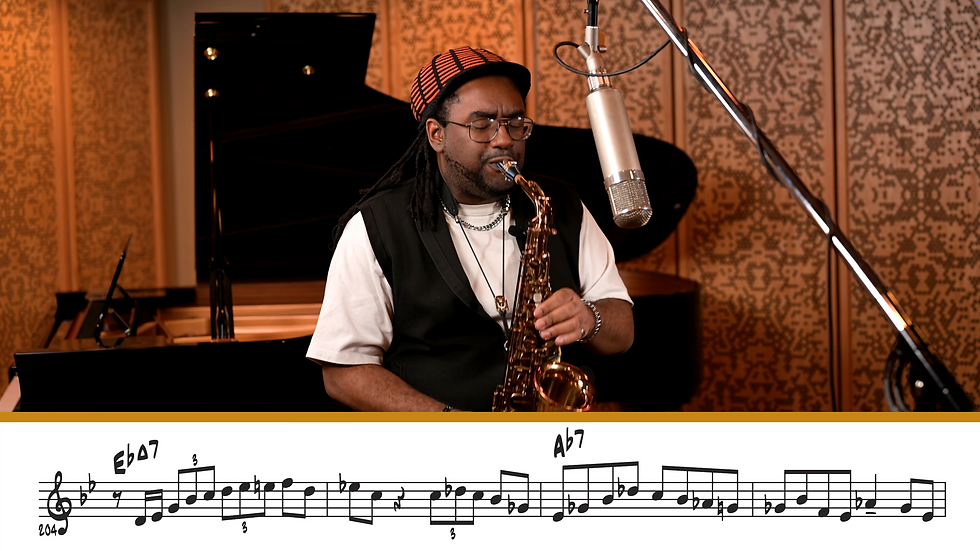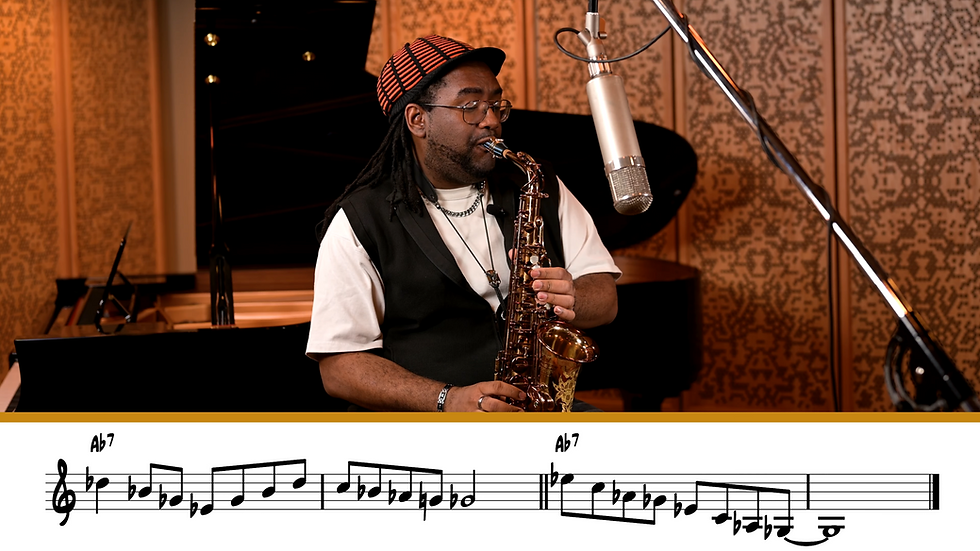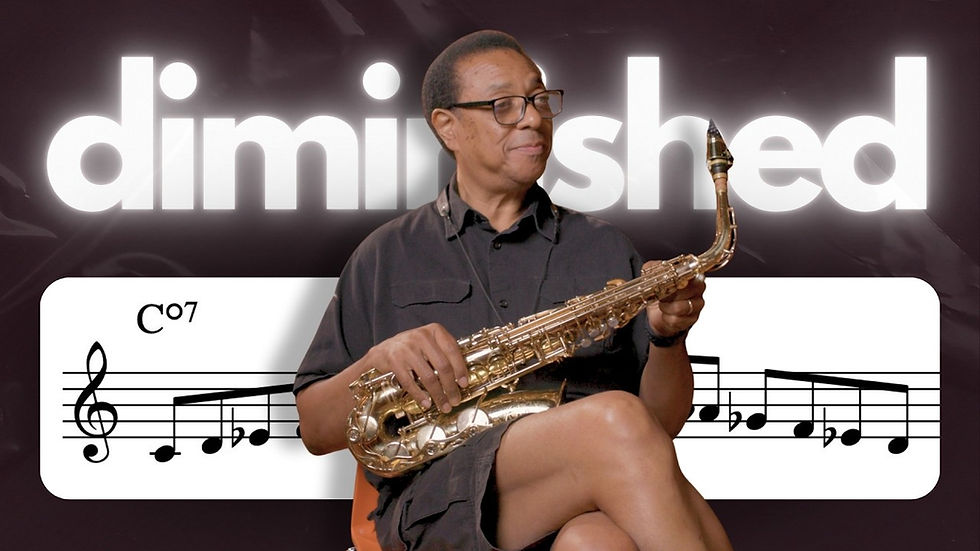Trad Jazz VS Bebop ft. Patrick Bartley
- Jazz Lesson Videos

- Aug 8
- 3 min read
Jazz has taken a lot of different forms and styles over the years, and as a jazz musician, it’s important for us to understand what makes the different types unique so that we can use it in our playing. That’s why Patrick and Jazz Lesson Videos have created a Jazz Styles Course. If you want to learn more about what we talk about today, be sure to check that out here!
Contents
How trad jazz led to bebop
Towards the end of the ‘20s and into the ‘30s—during the Great Depression and during the war years, as music was progressing, so were its concepts.
Traditional jazz concepts (like staying on the tonic) were still present, but now you had a little more freedom in how you can express yourself around that. Of course, the "no maj7 rule" was completely getting thrown out. At this point, you're getting major sevens, getting flat fives—all sorts of new and creative stuff.
Now we move into the part of jazz that most people are more familiar with, and there are a lot of concepts that we use today that were founded in this era of jazz. Looking at the rhythm first, as the music moved out of New Orleans and into the big cities like Chicago and New York, the sound of the music also started to change. The preferences of these people and what they wanted to hear also started to change.
Specifically in New York, you had clubs like the Cotton Club and the Savoy Ballroom, which had “battle of the bands” with giant jazz orchestras. These orchestras made some modern moves by swapping the tuba for an upright bass, and changing the focus of drums from the snare and hi hat to the hi hat and ride cymbals. This helped the style evolve even further.

So that was the first few bars of Cherokee in a bebop style. And one of the first things we’ll talk about is how coming out of trad jazz into the swing and bebop style, the rhythmic cadence also started to change.
Rhythmic differences
As we learned in the trad jazz idiom, the most important thing was making sure the tonic was constant, right? Of course, we talked about how it's important in all types of jazz, but you really didn't want to stray away from cadencing on the four, the one, or the “and” of three.
Moving into swing and bebop, that started to change. You can throw all that out and include more interesting cadential and rhythmic resolutions within the beat. So as a quick refresher, let's go ahead and explore the difference between Cherokee in a trad style versus Cherokee in a bebop style.




So when looking at those two examples, could you see the difference? You may have noticed that in addition to the rhythmic changes, there's also something else that was changing—the harmony.
Harmonic differences
In trad jazz, not only was the tonic important rhythmically, but it was also very important harmonically. The tonic was sacred and you didn't want to mess with it. That means that any type of note that took away from the sound of the one was kind of off limits.
The bebop musicians thought that it was corny and out of fashion to be super obvious, and that subtlety and more abstraction were desirable. So with these changes in preference also came a change in how they wanted to see the music being played. It became more acceptable and actually desired to play different types of harmonic choices outside of just what was in the typical triad. The major six chord is a good example of this.
A V-I resolution became a ii-V-I resolution. As a matter of fact, in so many different songs you might hear that there used to be just a V-I or even a viiº-I. This changed to having a ii-V-I or a substituted chromatic ii-V-I.
For example, in the seventh and eighth bars of the A section of Cherokee, normally we would, in the trad jazz example, just play one single dominant chord — V7. A bebop player during that time, like Charlie Parker, might look at that chord and want to extend the feeling and make it less direct. We can take that V and imply a ii-V. Here are what those two different sounds would look like.

That’s all we have for today, but make sure to check out Patrick’s jazz styles course with Jazz Lesson Videos.
We’ll see you next time!



Жизнь порой преподносит неожиданные повороты, и если бы кто-то сказал мне год назад, что я буду здесь и сейчас, я бы просто рассмеялся ему в лицо. Всё началось с обычного вечера, когда я, как обычно, сидел за компьютером и искал способы немного отвлечься от рутины. Друзья давно твердили, что в сети есть места, где можно не только убить время, но и получить неплохие эмоции. Я не особо верил, но решил попробовать.
Первое, что бросилось в глаза — это огромное количество сайтов с яркими баннерами и заманчивыми обещаниями. Но, как оказалось, не все они работают стабильно. Блокировки, технические сбои, бесконечные переадресации — всё это быстро утомляет. Тогда я начал искать альтернативы и наткнулся на vavada зеркало рабочее зеркало сайта. Это было…